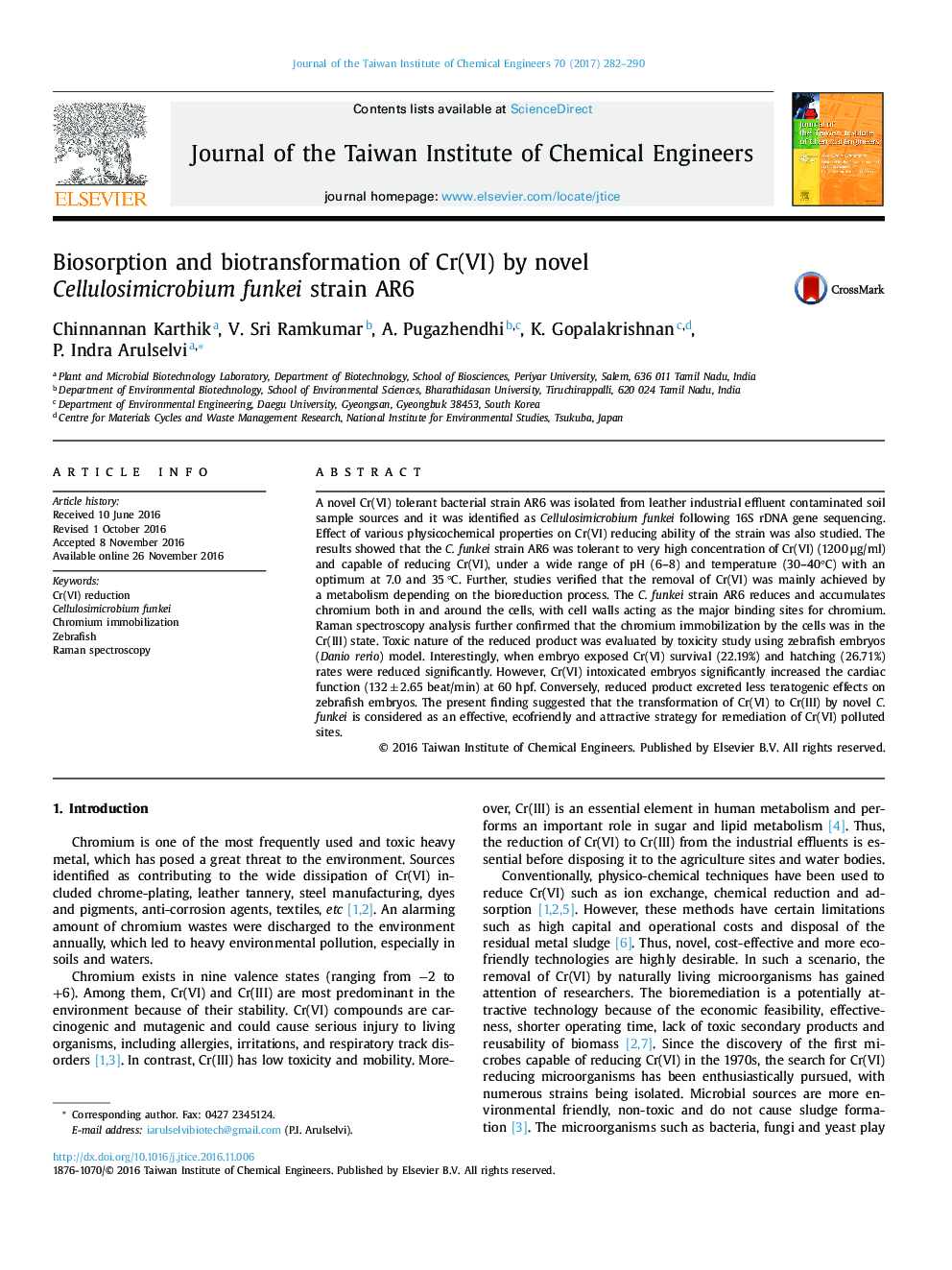| کد مقاله | کد نشریه | سال انتشار | مقاله انگلیسی | نسخه تمام متن |
|---|---|---|---|---|
| 4998909 | 1460404 | 2017 | 9 صفحه PDF | دانلود رایگان |

- A novel Cellulosimicrobium funkei strain AR6 was isolated from Cr contaminated soil sample sources.
- Strain AR6 could reduce and accumulate Cr both extracellularly and intracellularly.
- Raman spectroscopy confirmed that the chromium immobilized by the cells was in the Cr(III) state.
- Bacterially reduced product excreted less teratogenic effects on zebrafish embryos.
- C. funkei was for the first time reported as the Cr(VI) reducing bacteria.
A novel Cr(VI) tolerant bacterial strain AR6 was isolated from leather industrial effluent contaminated soil sample sources and it was identified as Cellulosimicrobium funkei following 16S rDNA gene sequencing. Effect of various physicochemical properties on Cr(VI) reducing ability of the strain was also studied. The results showed that the C. funkei strain AR6 was tolerant to very high concentration of Cr(VI) (1200 µg/ml) and capable of reducing Cr(VI), under a wide range of pH (6-8) and temperature (30-40°C) with an optimum at 7.0 and 35 °C. Further, studies verified that the removal of Cr(VI) was mainly achieved by a metabolism depending on the bioreduction process. The C. funkei strain AR6 reduces and accumulates chromium both in and around the cells, with cell walls acting as the major binding sites for chromium. Raman spectroscopy analysis further confirmed that the chromium immobilization by the cells was in the Cr(III) state. Toxic nature of the reduced product was evaluated by toxicity study using zebrafish embryos (Danio rerio) model. Interestingly, when embryo exposed Cr(VI) survival (22.19%) and hatching (26.71%) rates were reduced significantly. However, Cr(VI) intoxicated embryos significantly increased the cardiac function (132â±â2.65 beat/min) at 60 hpf. Conversely, reduced product excreted less teratogenic effects on zebrafish embryos. The present finding suggested that the transformation of Cr(VI) to Cr(III) by novel C. funkei is considered as an effective, ecofriendly and attractive strategy for remediation of Cr(VI) polluted sites.
128
Journal: Journal of the Taiwan Institute of Chemical Engineers - Volume 70, January 2017, Pages 282-290